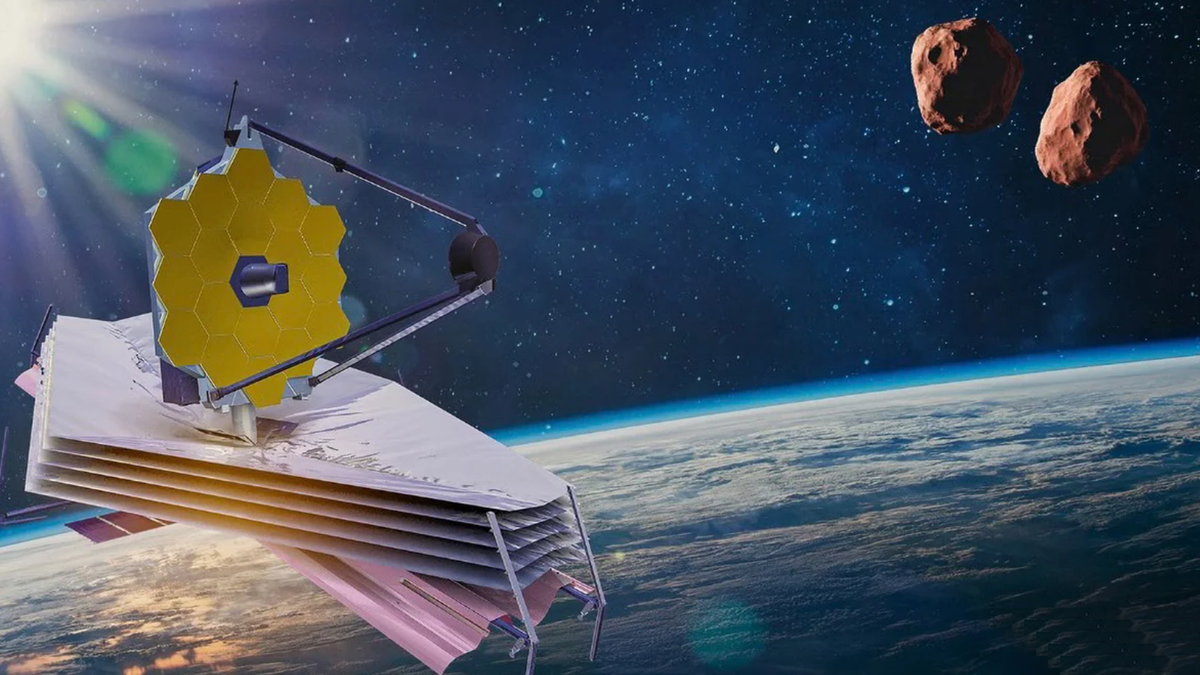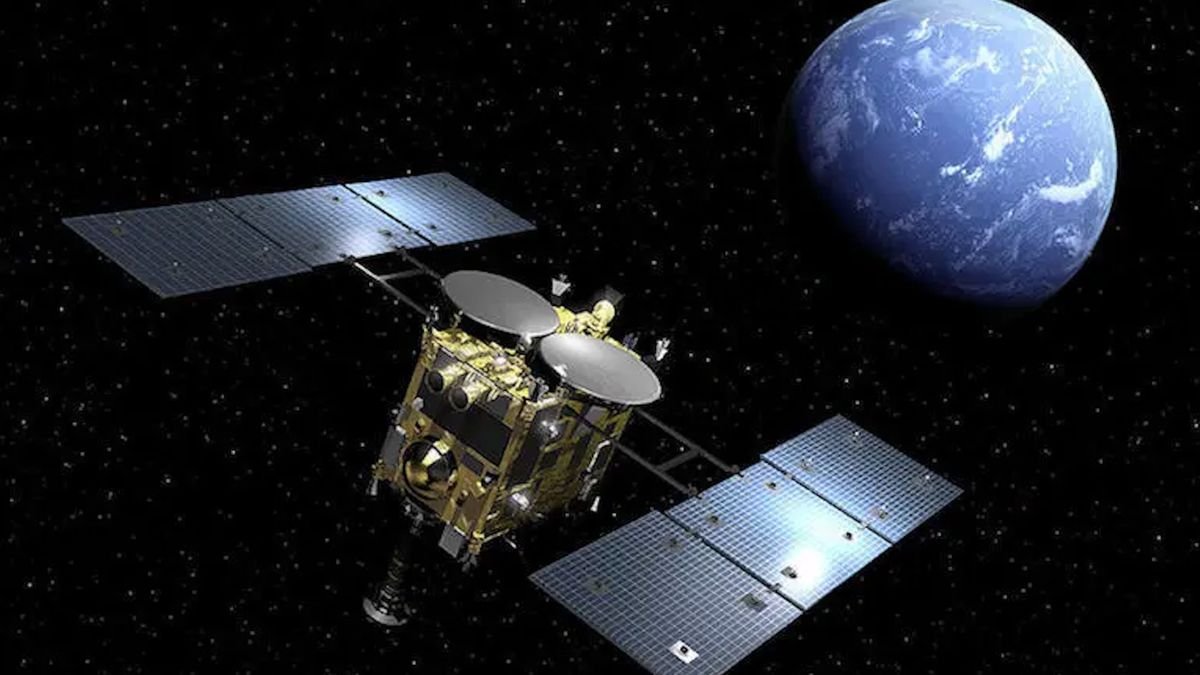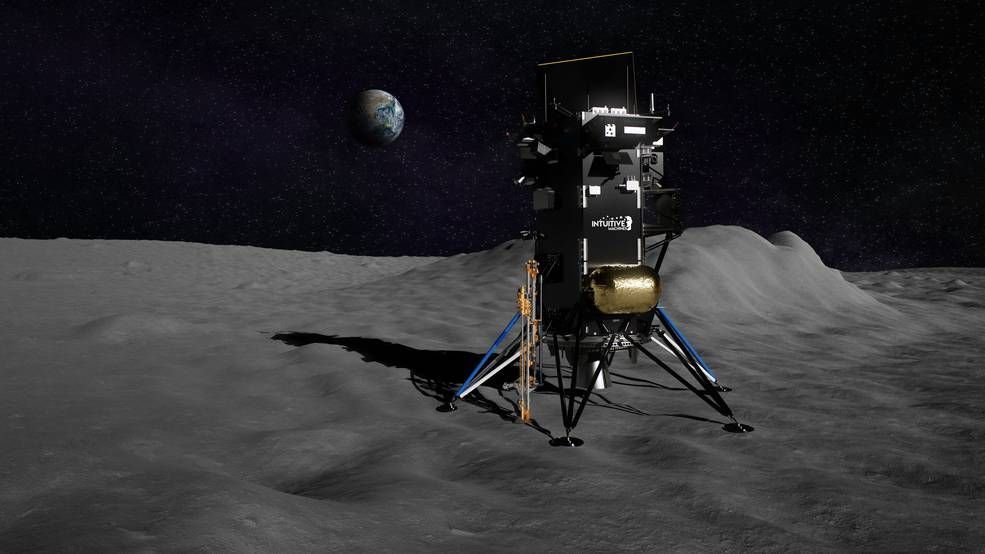In examining a pair of icy asteroids at the edge of the solar system, the James Webb Space Telescope is helping scientists understand the evolution of an ice giant: Neptune. These findings could also help reveal how ancient Earth grew saturated with water, the ingredient that ultimately led to the emergence of life.
The binary asteroid system Mors-Somnus was recently discovered to have originated within an icy band of objects that make up what’s known as the “the Kuiper Belt.” This region exists beyond the orbit of Neptune, the eighth and furthest planet from the sun. Mors-Somnus can therefore be used as a proxy to study the dynamic history of Neptune as well as other icy bodies in the Kuiper Belt, also known as trans-Neptunian objects (TNOs).
Some larger TNOs have been investigated in detail before, but this research, conducted by the James Webb Space Telescope‘s Surface Compositions of Trans-Neptunian Objects (Disco-TNOs) program, represents the first time the surface composition of two parts of a small, binary pair of TNOs has been investigated. It’s also the first time, therefore, that their chemical compositions have been revealed.
Related: 3 tiny new moons found around Uranus and Neptune — and one is exceptionally tiny

“We are studying how the actual chemistry and physics of the TNOs reflect the distribution of molecules based on carbon, oxygen, nitrogen and hydrogen in the cloud that gave birth to the planets, their moons, and the small bodies,” Ana Carolina de Souza Feliciano, research leader and Disco-TNOs program scientist at the Florida Space Institute, said in a statement. “These molecules were also the origin of life and water on Earth.”
Binaries like Mors-Somnus are rare finds outside the Kuiper Belt. This is because the gravitational bond between such distantly separated binaries is disturbed when they are not protected by other icy bodies and fragments within the belt. This indicates to the team that the process by which Mors-Somnus was transported to its current position outside the Kuiper Belt must have been relatively slow.
De Souza Feliciano and colleagues used the JWST to compare the surface of Mors-Somnus to the surfaces of six other undisturbed TNOs, or “cold classical” ones, to determine they have many commonalities. This revealed that these cold, classical bodies as well as the asteroids Mors and Somnus all formed around 2.7 billion miles away in the same Kuiper Belt region. In this region, other TNOs are thought to have formed, too.
Furthermore, the fact that these bodies appear perturbed from their original positions in the Kuiper Belt means that scientists can compare them to undisturbed cold classical TNOs and perhaps track down how Neptune has migrated to reach its current orbit.
These are exactly the kind of results researchers were hoping to find once Disco-TNOs data of nearly 60 TNOs started getting delivered from the JWST in late 2022.
“As we started to analyze the Mors and Somnus spectra, more data were arriving, and the connection between the dynamic groups and compositional behavior was natural,” de Souza Feliciano said.
Research co-leader and Florida Space Institute researcher Noemí Pinilla-Alonso conceived the Disco-TNOs program. Thanks to its unprecedented spectral observation capabilities, she believes the JWST will deliver even more information about objects in the Kuiper Belt and even beyond Neptune someday.
“For the first time, we can not only resolve images of systems with multiple components, but we can also study their composition with a level of detail that only the JWST can provide,” Pinilla-Alonso said. “We can now investigate the formation process of these binaries like never before.”
Though the JWST was designed to view objects like galaxies and quasars in the early universe, and thus billions of light-years away from Earth, de Souza Feliciano believes this research emphasizes how the JWST is a true trailblazer.
“Before JWST, there was no instrument able to obtain information from these objects in that wavelength range,” she said. “I feel happy to be able to participate in the era inaugurated by the JWST.”
The team’s research was published on Jan. 9 in the journal Astronomy & Astrophysics.










